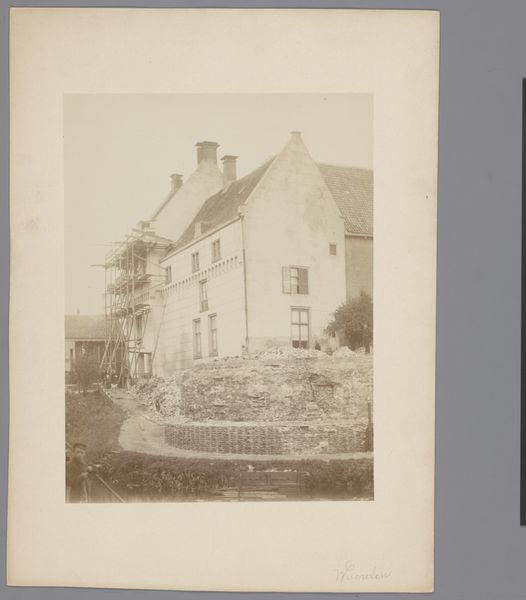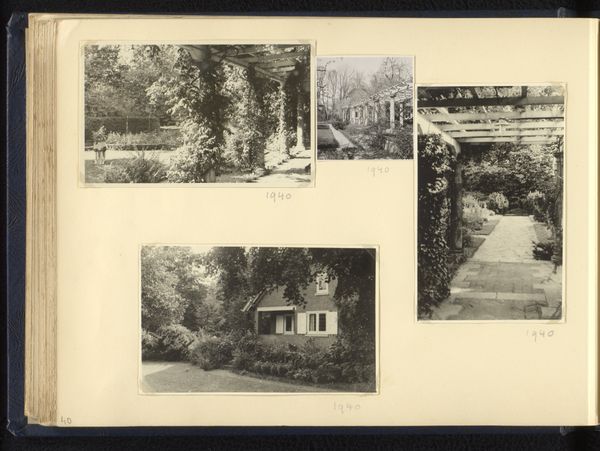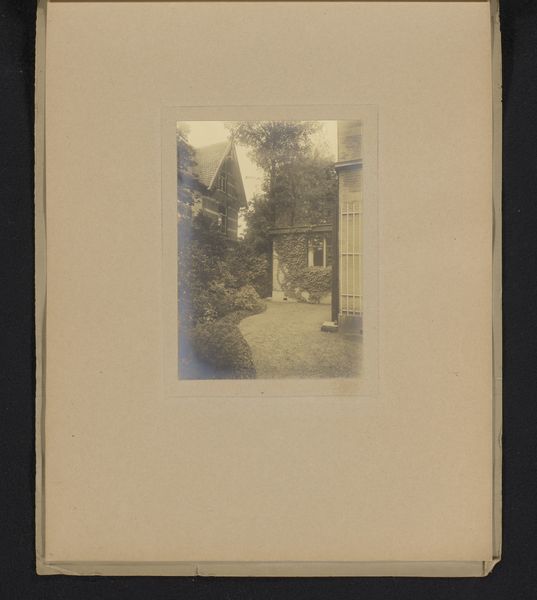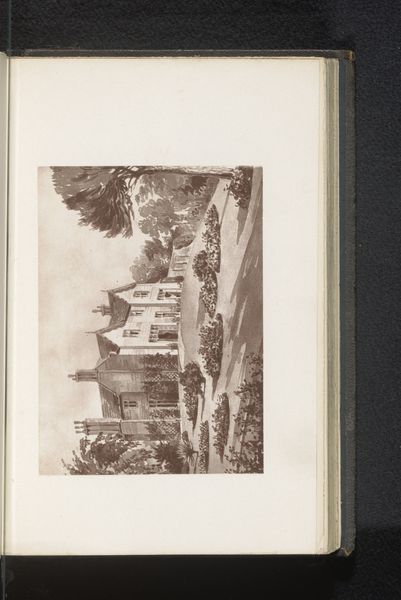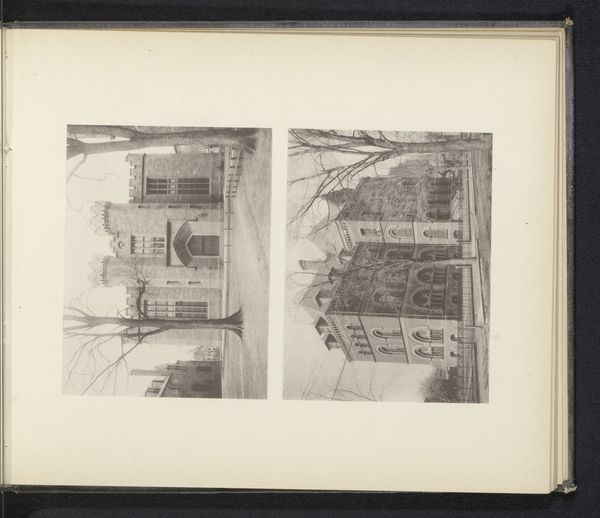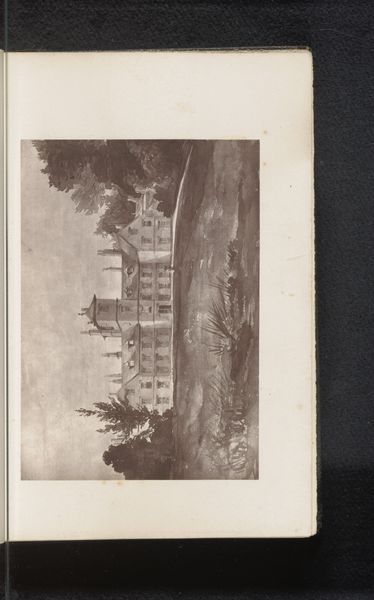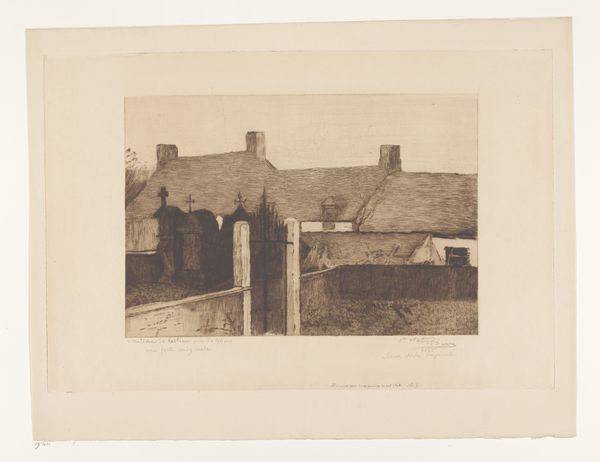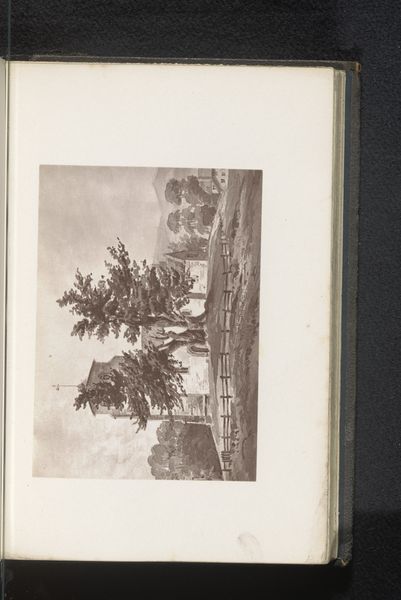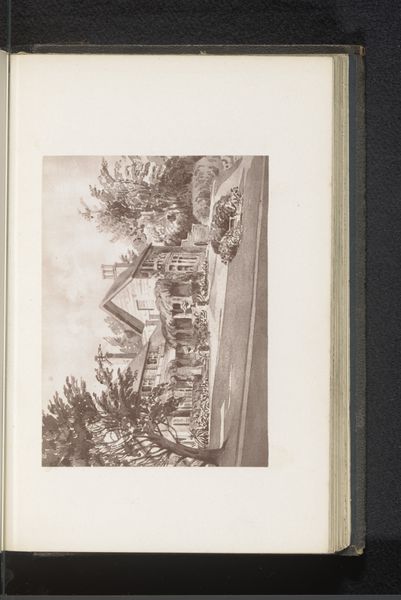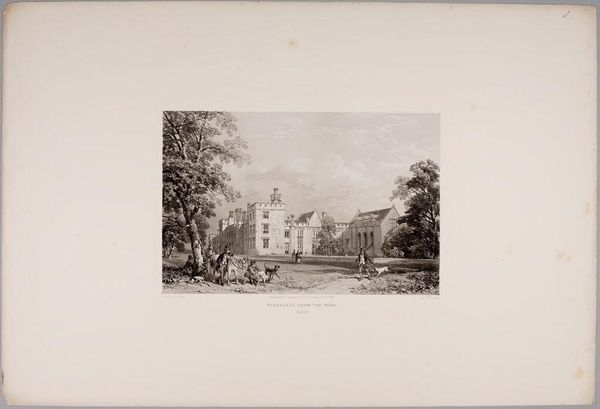
Fotoreproductie van een schildering, voorstellende een gezicht op Lime House before 1876
0:00
0:00
print, photography, albumen-print
# print
#
landscape
#
photography
#
albumen-print
#
building
Dimensions: height 84 mm, width 116 mm
Copyright: Rijks Museum: Open Domain
Curator: This intriguing print is entitled 'Fotoreproductie van een schildering, voorstellende een gezicht op Lime House,' translating to 'Photographic reproduction of a painting, depicting a view of Limehouse.' We believe it dates from before 1876. What's your initial read on it? Editor: I get a sense of tranquil isolation, despite it showing buildings. It is quiet, private almost... like stumbling upon someone else’s dream. The tones, all sepia and faded sunlight, feel very distant in time. Curator: The anonymous artist has captured more than just buildings; that sepia tone infuses the scene with a particular cultural memory, connecting it to early photographic processes. The very choice to depict what looks like Limehouse tells us a story about that time in history. Editor: The eye is drawn, in that sense, not so much to the buildings as symbols of domesticity or structure but the *idea* of what a house represented during the industrial era. The windows—those rows of little watchful eyes—strike me as deeply symbolic, promising narratives we can't quite reach. Is this more than just documentation? Curator: Indeed! Consider the materials – albumen print photography – a technique already evolving rapidly at the time. To capture and then reproduce what was already a painterly representation offers multiple layers of mediation, a conscious crafting of image over direct document. It becomes something of a Russian nesting doll of perspectives. Editor: A double layer of removal, absolutely. It heightens the effect you were speaking of... it no longer functions as reportage but dreamlike recollection, where specific geography melts away in a psychological landscape, or a state of feeling that the word “home” represented, perhaps? I think, if anything, it serves to show what home truly stands for. Curator: That sense of “home” then gets fragmented. The print and photograph blur the boundaries between artistic intention, lived experience and reproduced reality... which then gets layered in with the viewer. Editor: Precisely, creating not just an image but also an invitation, it seems. An invitation to participate in an elusive conversation that started well over a century ago...
Comments
No comments
Be the first to comment and join the conversation on the ultimate creative platform.
